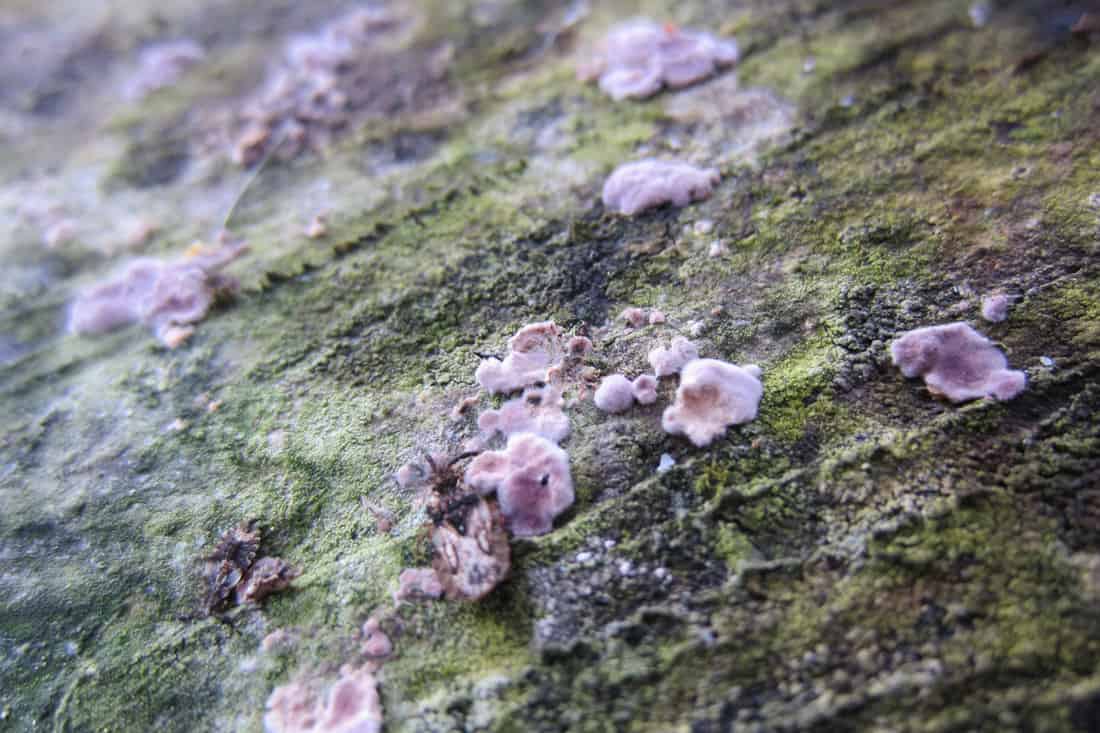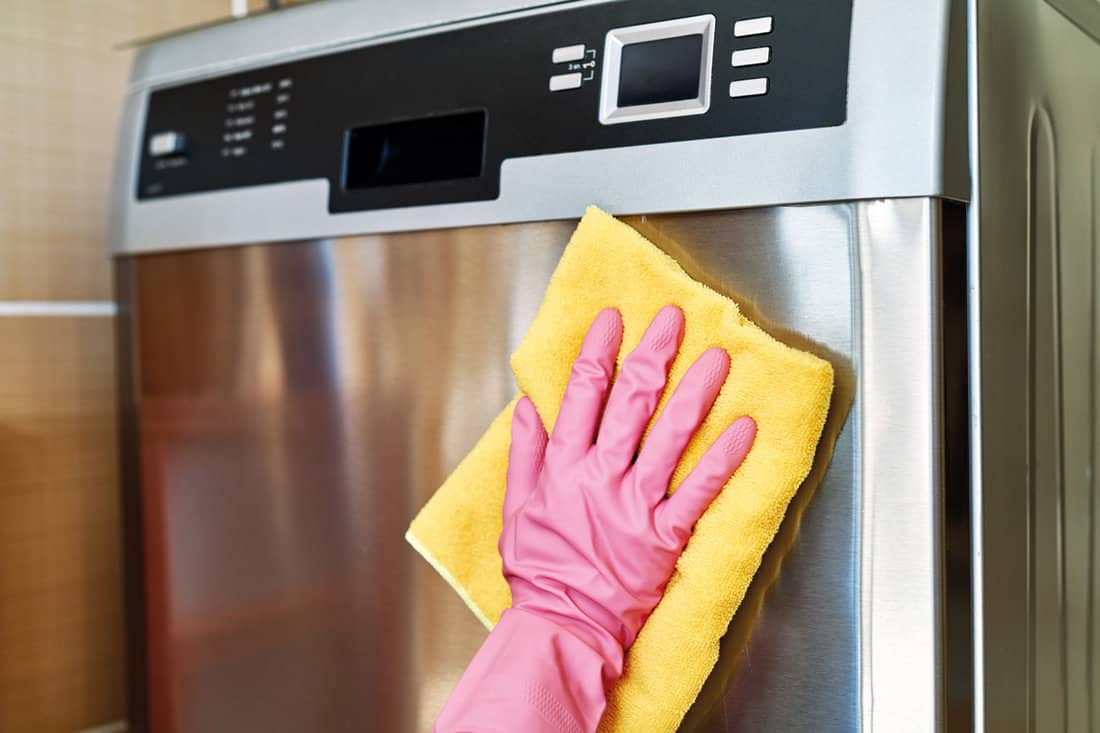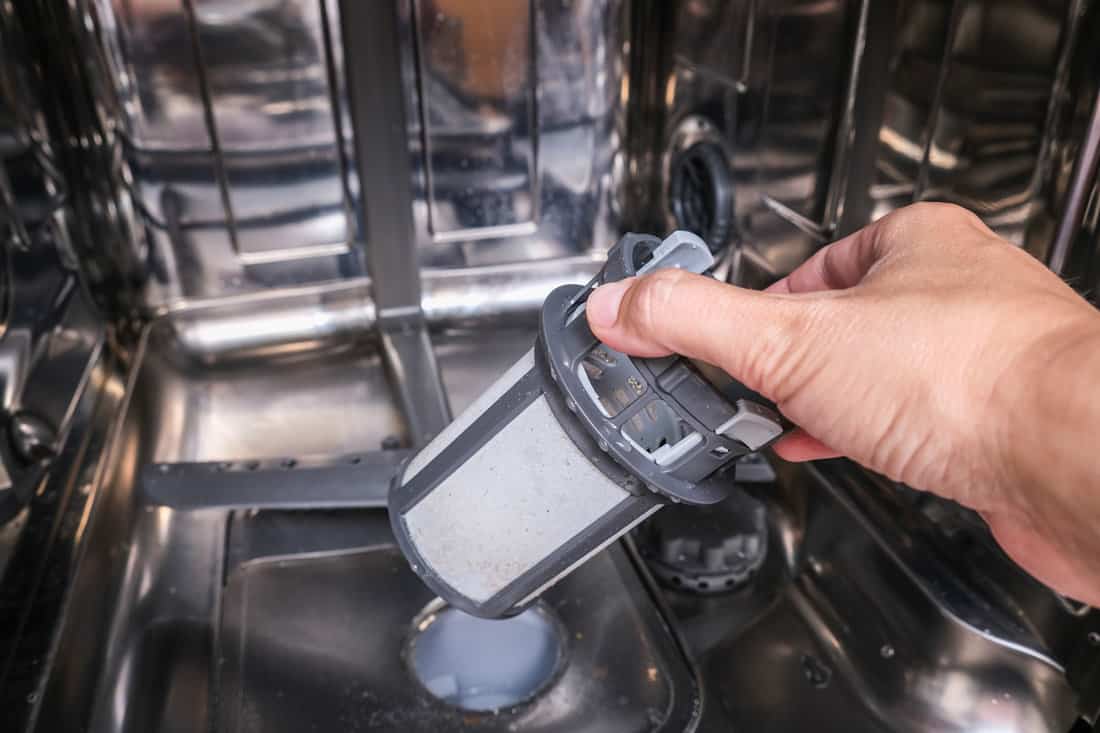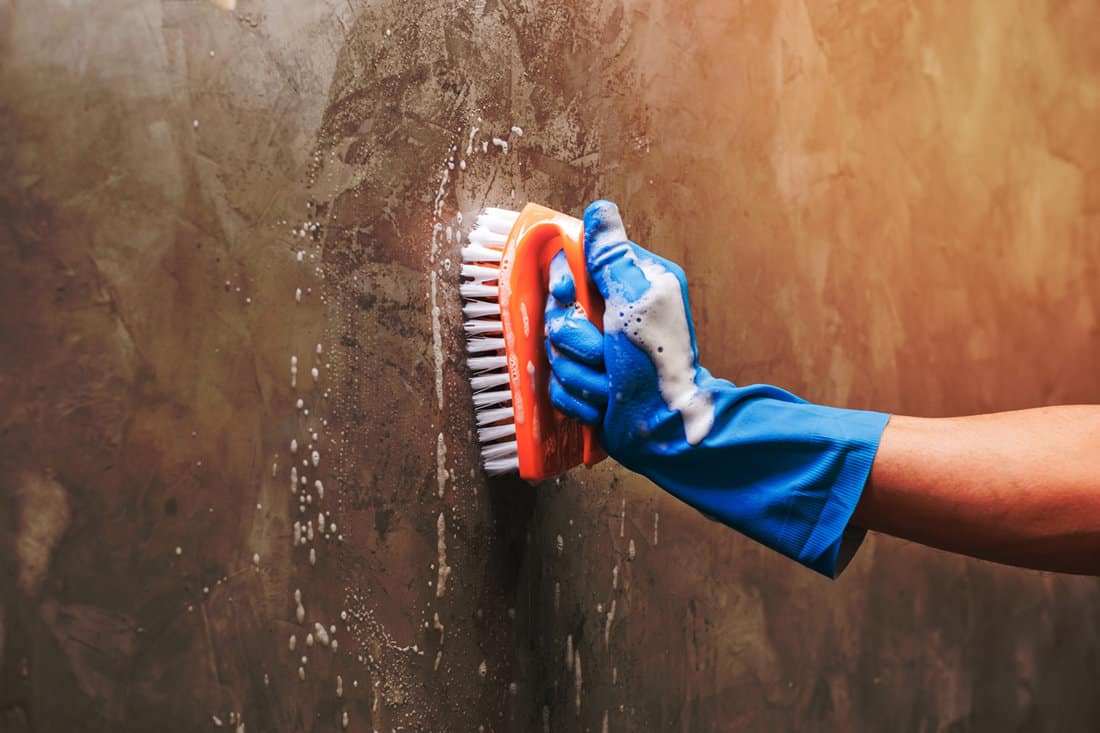Opening your dishwasher greets you with pink mold that hinders the appliance’s ability to clean your dishes efficiently. So how can you get rid of this buildup? We researched this concern for your convenience, and here’s the information we found.
First, prepare for the upcoming cleaning project. Make sure that you’re following the correct safety procedures. Then, gather the items you’ll need.
Once you have all the materials and pieces of equipment needed, follow these steps to get rid of the pink mold in your dishwasher:
- Turn the dishwasher off and unplug from the power supply
- Disassemble the dishwasher
- Clean the metal parts
- Clean the dishwasher
- Rinse the dishwasher
- Reinstall the parts
Take note that you shouldn’t miss important details for this task. Otherwise, pink mold may persist and continue to thrive in your dishwasher. So continue reading as we talk about this operation in greater detail.

How To Prepare
Before you start getting rid of the pink mold in your dishwasher, you should ensure that the appliance is active. So turn it off by unplugging it from its socket. An alternate way to make sure that the dishwasher is off is to disengage the connected circuit breaker.
We sometimes add affiliate links and content that was curated and created by our team with the help of advanced ai tools to help showcase the best design styles.

Next, make sure that you’re following proper safety protocols. Some of the preventive measures that should be in place are:
- Don’t mix cleaning solutions, unless specified by manufacturer's instructions. Combining random chemicals and harsh ingredients could result in toxic fumes and other hazardous substances.
- Wear protective clothing (e.g., a long-sleeved shirt, overalls, or coveralls). That way, your skin won’t have direct contact with the pink mold.
- Wear safety gear. Gloves, goggles, and a respirator are excellent examples to help protect your hands, eyes, and nose from irritation.
- Avoid using bleach on the plastic and rubber parts. Instead, use vinegar as it’s a milder solution than the standard formula of bleach.
- Don’t leave your equipment and tools on the floor. Keep your workspace as clean and as tidy as possible to prevent accidents and injuries resulting from falls.
Check out these reusable household gloves on Amazon.
Also, check your dishwasher’s owner’s manual before initiating the cleaning procedure. Certain models may need you to go through unique steps to help you in cleaning the appliance thoroughly.
The Things You’ll Need
- Laundry detergent
- Bleach
- Spray bottle
- Sponges
- Vinegar
- Dishwashing detergent
- Old toothbrush
- Soft-bristled brush
DIY Instructions To Get Rid Of Pink Mold In Dishwasher

Step #1: Disassemble The Dishwasher
Open the dishwasher and remove the dishwashing rack. Then, remove the other parts of the appliance. Take note that it’s best to take out all the removable surfaces to ensure a deep clean.
Once removed, separate the parts into different material categories. For example, one group of components has stainless steel parts, while another may have plastic components.
Step #2: Clean The Metal Parts
Mix a small amount of bleach with laundry detergent in a spray bottle. An alternate product for that mixture is to use a commercially prepared foaming bleach solution. Then, place the metal parts in a large bucket or your bathtub.
With your gloves equipped, hold the pink mold-infested part under the faucet to rinse off the substance as much as you can. Next, lightly spray the parts with your preferred bleach solution. Allow the product to sit on those surfaces for a few minutes before proceeding with the rest of the task.
After that period, brush those surfaces with a soft-bristled brush or an old toothbrush to remove the pink gunk buildup. Once you feel satisfied with the cleanup, rinse the parts under lukewarm water to help remove any leftover pink mold. Leave the parts in the bucket or bathtub for now.
Note: You may use a hard-bristled brush to remove stubborn pink mold. But be careful when using that tool on and around delicate components, as you might damage them.
Step #3: Clean The Dishwasher

While you’re still wearing gloves, go back to the dishwasher and wipe away the pink mold surrounding its interiors. Dump the mold in a container for easy disposal. You can also use the soft-bristled brush or old toothbrush you used in the earlier step to help remove stubborn mold.
Then, dip a clean sponge in a container of vinegar. Next, wipe the inside of the dishwasher with the vinegar-dipped sponge. Don’t worry about putting an abundant amount of vinegar in the dishwasher as it shouldn’t harm the appliance.
Moving forward, dip another clean sponge in a dishwashing detergent. Use this new sponge to wipe the inside of the dishwasher and help remove pink mold remnants.
Step #4: Rinse The Dishwasher
Close the dishwasher door and restore power to it. Turn it on afterward, then set it to a quick rinse cycle. Wait for the cycle to complete before proceeding to the next step.
Tip: You can return to the bucket or bathtub to check if the metal parts are now clean. If not, spray an extra amount of your preferred bleach solution on those components. Allow the bleach to sit for a few minutes, then rinse it off with lukewarm water.
Step #5: Reinstall The Parts

After the dishwasher finishes its cycle, turn it off again. Open its door and wipe off any residual pink mold. Next, reinstall the parts you removed earlier. You can follow your owner’s manual if you have difficulty with the reassembly.
Close the dishwasher door afterward. Restore power to the appliance again, and allow it to run with another quick rinse cycle.
Check out this product on Amazon.
You can also watch the video below if you need a visual guide to this procedure:
At this point, you might also find it interesting to learn about using bleach to clean a bathroom floor. If so, read our post on that topic to know the steps.
Why Does Pink Mold Happen?
Pink mold may appear in your dishwasher or other places in your household because these locations are excellent for it to flourish. The factors that often affect the rate at which pink mold appears and grows are:
- Excess Humidity
- Moisture
- Food byproducts
How Fast Does Pink Mold Grow?
The rate at which pink mold grows and propagates often depends on its environment. If the location is ideal for the substance to thrive, expect signs of it appearing in about 24 to 48 hours.
You might also be curious if mold can grow under a carpet. We have a post highlighting that concern that you can read to know the answer.
How Do You Keep Pink Mold Away?
After eliminating the pink mold from your dishwasher, you can take advantage of certain preventive measures to stop the substance from returning. Some of these precautionary techniques are:
Maintain Humidity Levels
Excess humidity could allow pink mold to grow and spread from your dishwasher to other nearby surfaces. Indoor humidity levels should only be a maximum of 50%. Otherwise, you might see signs of mold growth, including the pink variety, in different areas.
You can also take advantage of a reliable hygrometer to keep tabs on your home’s humidity levels.
Check out this digital hygrometer on Amazon.
Keep Surfaces Dry
Some dishwashers have drying features. Use these functions to help prevent excess moisture buildup. If your dishwasher doesn’t have a drying feature, you may need to wipe off the extra dampness after each dishwashing cycle.
Wipe Surfaces Regularly
Wipe your dishwasher with vinegar or a mild cleaning detergent regularly. Turn this procedure into a routine to help prevent pink mold from growing in the appliance.
Remember, you should clean your dishwasher at least once a month. But you may need to increase this frequency if your household is reasonably large and you use many dishes frequently.
Is Pink Mold Dangerous?
Pink mold isn’t as dangerous as compared to other mold species, particularly black mold. But ingesting pink mold may lead to health issues, such as digestive problems, urinary tract infections, and even pneumonia.
When To Call A Professional To Eliminate Pink Mold?

Despite it being relatively easy to remove pink mold, you can call cleaning experts to do the job for you. You can also request the help of these specialized technicians if the pink mold infestation in your dishwasher or household is fairly massive. If so, the professional labor costs about $10 to $25 per square foot to clean.
Final Thoughts

Although pink mold isn’t dangerous, it can still promote certain risks. So you should deep clean your dishwasher as soon as you see signs of this substance in the appliance. If you believe you can’t (or don’t want to) handle this task using DIY techniques, it might be best to request help from industry professionals.




Molding is an issue that is faced everywhere. Whether it’s commercial or residential, attic mold removal is an important part of keeping a building clean. Look into finding a proper mold removal Toronto team if you’re experiencing molding.